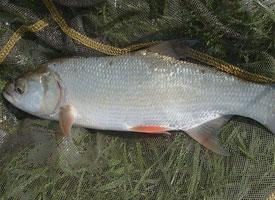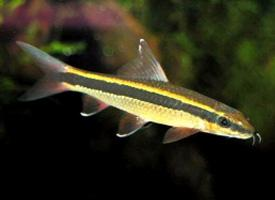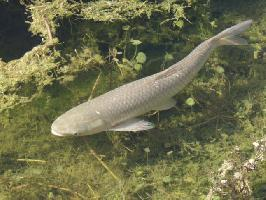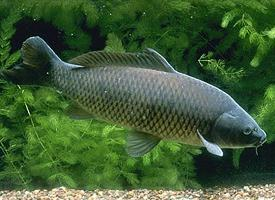
Greutăți și măsuri
| Lungime | 120 cm |
|---|---|
| Greutate | 15 kg |
Date biologice
| Durata de viață | 15 r |
|---|
Descrierea animalului
The Asp (Leuciscus aspius) is a fascinating and somewhat lesser-known species of freshwater fish that belongs to the Cyprinidae family, which is widespread across Europe and parts of Asia. This intriguing species thrives in a variety of aquatic environments, including rivers, lakes, and reservoirs, particularly favoring areas with clear, well-oxygenated water and moderate to strong currents. The asp is notably recognized for its streamlined body and dynamic swimming capabilities, making it a formidable predator in its natural habitat.Physically, the asp presents a sleek and elongated body that can grow quite large, with mature individuals commonly reaching lengths of up to 80 centimeters (31 inches), though exceptional specimens have been known to exceed 120 centimeters (47 inches). The body of the asp is covered in large, silvery scales that shimmer beautifully under the sunlight, providing an effective camouflage against predators when viewed from above or below. Its back is usually a darker shade, varying from greenish to bluish tones, which gradually fades into a silvery-white belly. This coloration not only adds to its aesthetic appeal but also serves as a practical adaptation for survival.
The head of the asp is relatively small compared to its body, with a distinctly pointed snout and a wide, slightly downturned mouth that is well-adapted for its predatory lifestyle. Its jaws are equipped with sharp, conical teeth designed to grasp slippery prey with ease. The asp's eyes are positioned on the sides of its head, providing a broad field of vision to spot potential meals or threats.
Asps are known for their remarkable speed and agility in the water, attributes that are crucial for chasing down their prey. Their diet primarily consists of smaller fish, but they have also been known to consume aquatic insects and crustaceans, showcasing their opportunistic feeding behavior. The asp's predation strategy involves swift, sudden bursts of speed to surprise and capture unsuspecting prey, a testament to its prowess as a hunter.
The breeding season for asps typically occurs in late spring to early summer, when water temperatures rise. During this time, males develop distinctive nuptial tubercles on their heads and bodies, which are used to stimulate females during spawning. Females lay their eggs in shallow, gravelly or sandy areas of rivers or lakes, where the current can provide oxygenation. The eggs are left unguarded, and the young asps are left to fend for themselves from the moment they hatch.
Conservation-wise, the asp has faced challenges due to habitat degradation, pollution, and overfishing in some areas. However, efforts are being made to protect and preserve their habitats, ensuring the survival of this unique species for future generations.
In conclusion, the asp (Leuciscus aspius) is a remarkable and efficient predator with a sleek, streamlined body and a lifestyle that makes it a fascinating subject of study for ichthyologists and nature enthusiasts alike. Its presence in freshwater ecosystems highlights the importance of biodiversity and the need for ongoing conservation efforts to protect such species and their habitats.
Animale similare
Fotografii noi cu animale
Top 10 animale
- Diana monkey (Cercopithecus diana)
- Dolphin gull (Leucophaeus scoresbii)
- Galápagos tortoise (Geochelone nigra complex)
- Moustached guenon (Cercopithecus cephus)
- Japanese spider crab (Macrocheira kaempferi)
- Colossal squid (Mesonychoteuthis hamiltoni)
- Fox tapeworm (Echinococcus multilocularis)
- Stone loach (Barbatula barbatula)
- Japanese macaque (Macaca fuscata)
- Barbary macaque (Macaca sylvanus)


